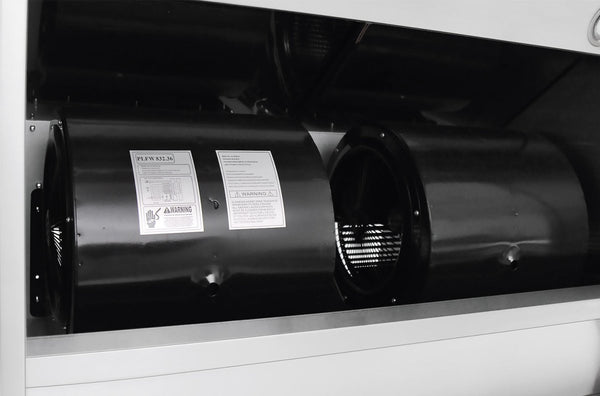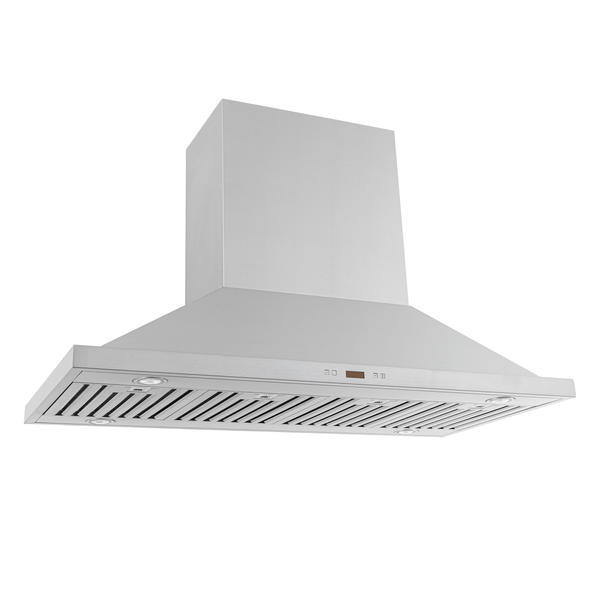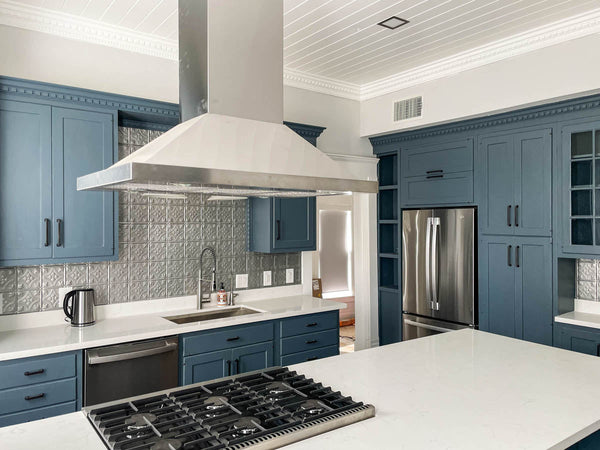Table of Contents
The Ultimate Kitchen Upgrade
-
Your Dream Kitchen Starts Here
- Imagine walking into your kitchen and seeing a sleek, modern cooking space—free of smoke, grease, and overpowering food odors. The secret? A powerful and stylish insert range hood build right into your custom kitchen island.
-
Why This Kitchen Trend is Taking Over
- Island range hoods have become the go-to choice for homeowners who want an open, airy kitchen without sacrificing functionality. Unlike traditional wall-mounted hoods, an insert range hood blends into a custom-built enclosure, giving you maximum design flexibility while ensuring top-tier ventilation.
-
Aesthetic Appeal Meets Unmatched Performance
- By integrating a range hood insert into your island setup, you get the best of both worlds—a beautiful, high-end look with serious power. These inserts are designed to handle even the heaviest cooking, featuring high CFM ratings, whisper-quiet operation, and dishwasher-safe filters. Whether you're searing steaks or simmering sauces, your kitchen stays fresh and stylish.
Pre-Purchase Checklist
- ✅Measure kitchen dimensions
- ✅Check electrical capacity
- ✅Verify ducting route
- ✅Calculate required CFM
- ✅Check local building codes
- ✅Assess make-up air requirements
What Are Range Hood Inserts?
Range hood inserts are specialized kitchen exhaust fans that hide within a custom-built hood or cabinetry. Instead of a bulky, standalone unit, the insert is mounted flush inside a custom enclosure, letting you design the exterior to match your décor perfectly.
4 Benefits of Using Insert Range Hoods in Island Installations
- Customizable Aesthetics: Since the insert is concealed within a custom hood, you can tailor the exterior finish—stainless steel, glass, or even custom materials—to match your kitchen’s theme.
- Efficient Ventilation: Despite their discreet appearance, these inserts are engineered for high performance. With options ranging from 600 to 1200 CFM, they ensure that smoke, grease, and odors are quickly whisked away, making cooking safer and more enjoyable.
- Space-Saving and Sleek: You maintain clean lines and an uncluttered kitchen environment by concealing the fan unit. This is particularly appealing for open layouts where every design element counts.
- Quiet Operation: Modern designs incorporate variable speed settings, so you can enjoy effective ventilation without the distraction of excessive noise.
3 Tips for a Flawless Setup

Installation is key to achieving both performance and a polished look. Here are a few pointers drawn from industry guides and DIY blogs:
- Proper Height and Positioning: Ensure that the hood is installed 24–30 inches above your cooktop. This height is ideal for capturing steam and grease efficiently.
- Custom Cabinetry Integration: Work with a professional or follow detailed DIY guides (How to install an insert range hood) to build a custom enclosure that hides the insert while providing adequate clearance and ducting.
- Regular Maintenance: Clean the grease filters regularly—many models come with dishwasher-safe filters. This not only prolongs the life of the insert but also maintains its efficiency.
Maintenance Schedule
Weekly
- Wipe external surfaces
- Check filter condition
Monthly
- Clean grease filters
- Inspect duct connections
- Test all speeds
Annually
- Deep clean internal components
- Professional inspection
- Duct cleaning if needed
Cost Analysis
Initial Investment
- Budget units: $500-1000
- Mid-range units: $1000-2000
- Premium units: $2000-4000+
Check out our selection here: Insert Range Hood
Operating Costs
- Electricity: $20-50/year
- Filter replacement: $30-100/year
- Professional cleaning: $150-300/year
Choosing the Right Hood

- Kitchen Size and Layout
- Ceiling height requirements: Minimum 8 feet
- Island dimensions: Hood should extend 6 inches beyond cooktop
- Ventilation path length: Max 40 feet equivalent duct length
- Cooking Habits
- Light cooking: 300-400 CFM
- Regular family cooking: 600-800 CFM
- Heavy/commercial style: 900+ CFM
- Technical Requirements
- Electrical: 120V/15A circuit minimum
- Ducting: 6"-10" diameter
- Make-up air requirements: Required for > 400 CFM in most jurisdictions
Conclusion
Using an insert range hood for an island installation marries style with functionality. Not only does it ensure a clean, well-ventilated kitchen, but it also offers the creative freedom to design a custom look that complements your entire space. Whether you’re a seasoned DIY enthusiast or planning a high-end remodel, the integration of a range hood insert can transform your kitchen into a modern, efficient, and visually stunning environment.
Explore the possibilities, gather inspiration from the pros, and start planning your kitchen transformation today!












